JOURNEY TO THE SEVENTH CONTINENT
UNFORGETTABLE ANTARCTICA
The beginning:
Embarking on a journey to Antarctica is an endeavor filled with anticipation and unpredictability. Our adventure commenced in Buenos Aires, Argentina, where we encountered a Japanese woman and her teenage son in our hotel’s lobby. Their impeccable English facilitated a seamless conversation.
“We couldn’t disembark after leaving the Falkland Islands,” she recounted. “The captain deemed the seas too rough for zodiac landings, so we remained onboard for the entire two weeks.”
This revelation was unsettling. Despite meticulous planning over the past year, the prospect of journeying so far, at considerable expense, only to be confined to the ship, hadn’t crossed our minds.
A week later, in Ushuaia, I perused recent reviews of our impending cruise and was alarmed by a scathing account from the previous month. An elderly passenger had suffered a fall, resulting in a broken leg. The captain reversed course, anchoring near a small island, awaiting helicopter assistance. However, hazardous weather delayed the evacuation for three days, consuming the entirety of the cruise duration. The company declined refunds, citing contractual clauses absolving them from liabilities due to natural events.
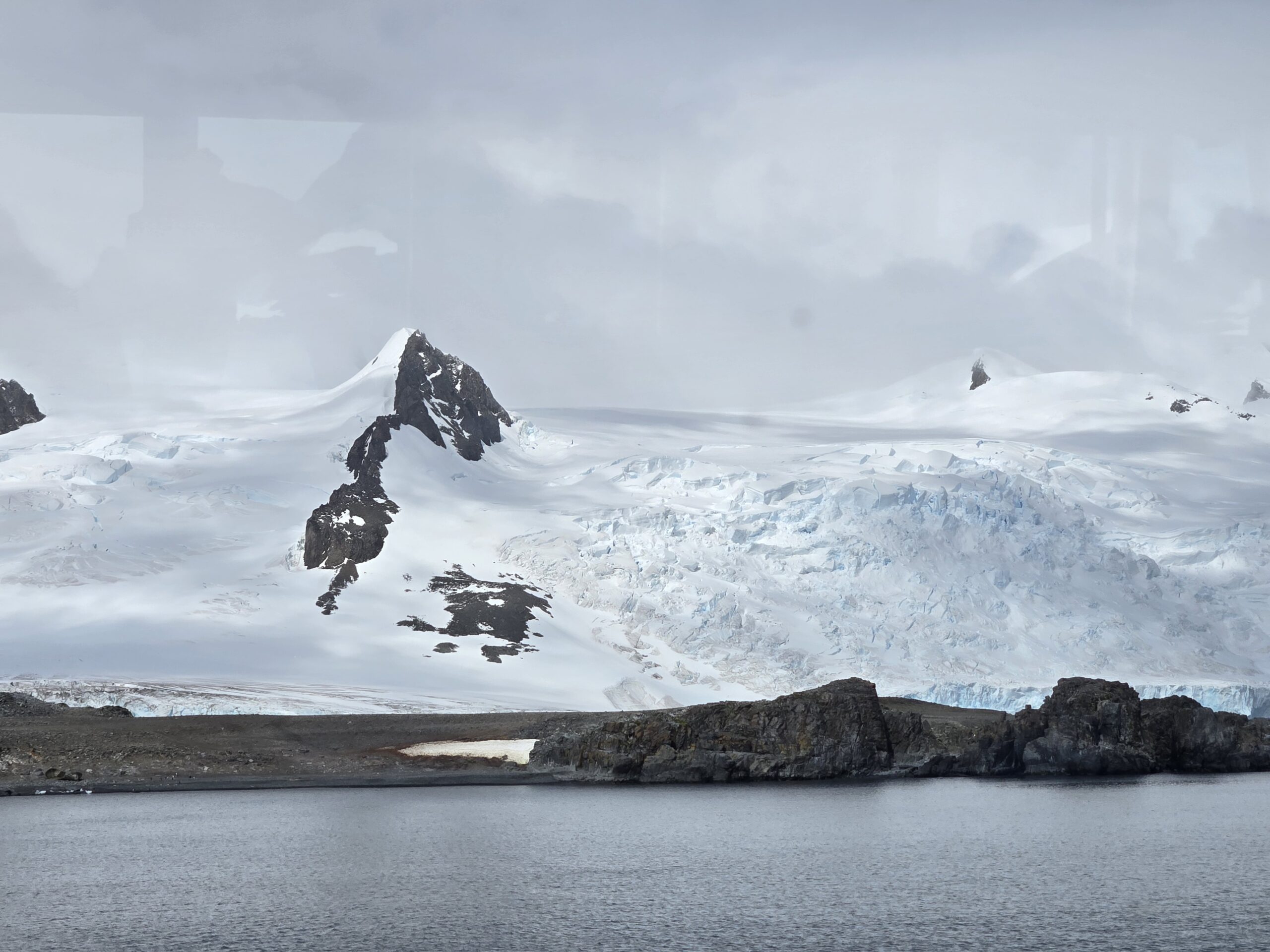
First view of Antarctica
Our ship – the Ocean Nova:
From our hotel, the port of Ushuaia was within view. On embarkation day, our ship, the ‘Ocean Nova,’ appeared diminutive alongside colossal cruise liners. With a capacity of 58 passengers and 30 crew members, it was among the smallest vessels navigating Antarctic waters. Notably, the ‘Ocean Nova’ had traversed both Arctic and Antarctic regions for over two decades without major incidents.
Boarding in the mid-afternoon, we found our cabin compact, featuring two fixed beds, a small table, and a bathroom reminiscent of a closet. The window, fortified with thick glass layers, hinted at the harsh conditions ahead.
Following a mandatory safety drill, we sailed through the picturesque Beagle Channel, named after HMS Beagle, which carried Charles Darwin on his seminal voyage. We passed Puerto Williams, Chile, a solitary lighthouse, and islands teeming with penguins and seabirds, observable only through quality binoculars.
Birds trailed our ship, occasionally swooping over the deck. We glimpsed pods of dolphins and, thrillingly, whales breaching the surface.
Our expedition-style cruise boasted an international crew of amateur and semi-professional scientists. Passengers were encouraged to engage in citizen science projects, complemented by lectures on regional geography and native wildlife.
Post-dinner, our seasoned Russian captain announced a deviation from the planned route to Cape Horn due to turbulent seas, opting instead for a direct course through the Drake Passage.

Our ship the ‘Ocean Nova’, anchored offshore, Antarctica
The Drake Passage:
Anticipating the notorious ‘Drake Shake,’ characterized by tumultuous seas, I applied Scopolamine patches behind our ears before retiring.
The night was unsettling. Awakened by violent ship movements, I clung to the bedside railing. Peering through the window, I watched as towering waves lifted and dropped the ship rhythmically. No prior reading could have fully prepared us for this experience.
The Drake Passage, spanning approximately 800 kilometers (500 miles) between South America’s Cape Horn and the South Shetland Islands of Antarctica, is infamous for its unpredictable conditions. Here, the Pacific and Atlantic Oceans converge with the Southern Ocean, creating some of the world’s most treacherous waters. Waves can reach heights exceeding 12 meters (40 feet), and the Antarctic Circumpolar Current, unimpeded by landmasses, contributes to the passage’s notorious reputation.
Reflecting on Ernest Shackleton’s early 20th-century Antarctic expeditions, I marveled at our relatively comfortable journey to this remote region, just over a century later.
The dining room was sparsely populated the following morning. A crew member informed me that the swells measured 12 to 15 meters (40-50 feet). Venturing to the front deck, I braved freezing winds to witness the ship’s dramatic ascent and descent amidst raging waves under gray, drizzling skies.
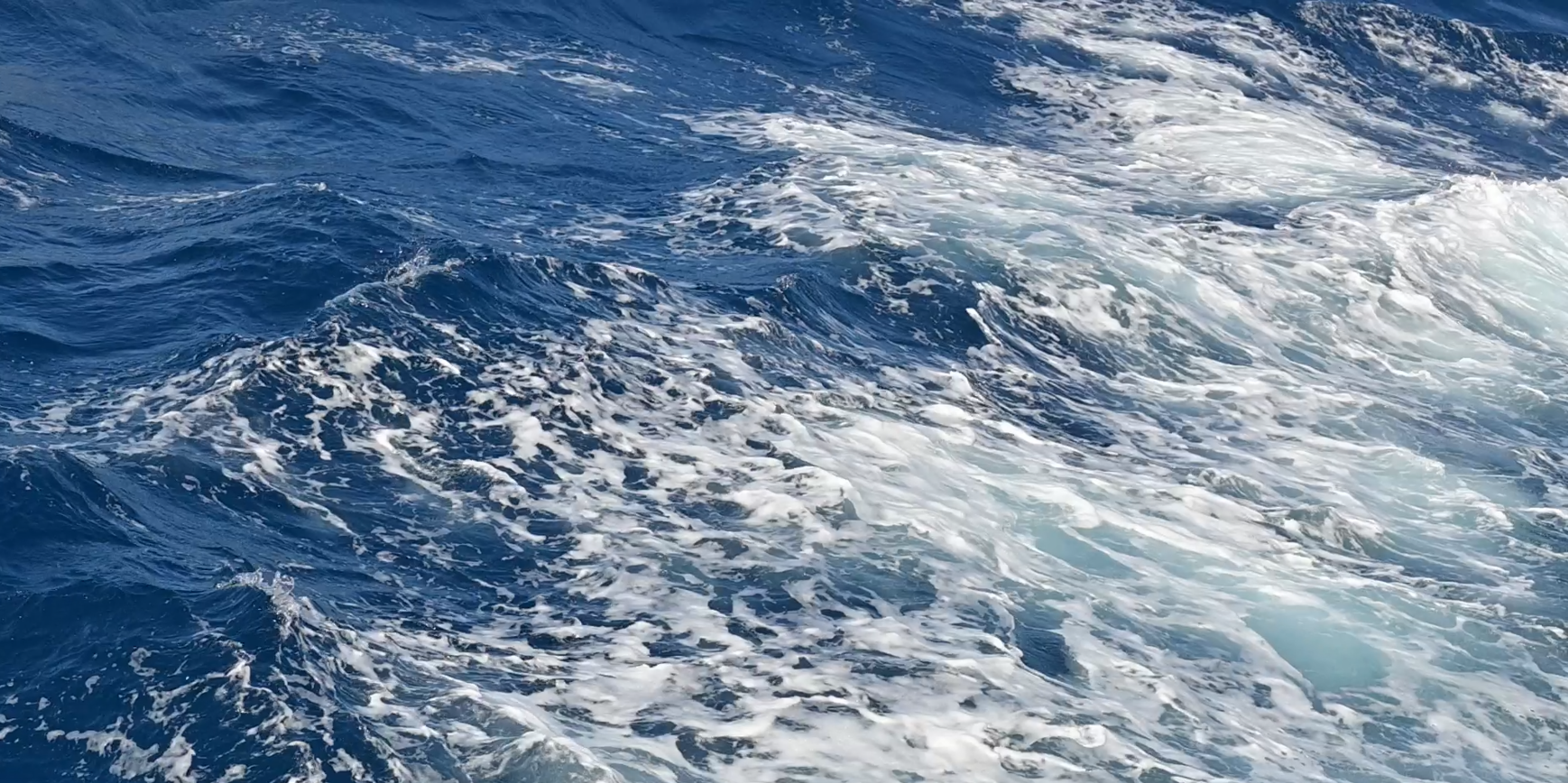
40-50 feet swells in the Drake Passage, the world’s most treacherous ocean passage
In Antarctica:
After a grueling 48 hours, the third morning greeted us with an unexpected calm. Through our window, a clear blue sky, a distant snow-covered island, and an iceberg came into view. We had arrived in Antarctica.
Donning warm attire, I rushed to the deck. The sea resembled a tranquil lake, with a vast ice-covered island ahead and icebergs drifting by. The sun shone brightly in a cloudless sky, and the absence of wind heightened the palpable excitement onboard.
After breakfast, preparations for our first landing commenced. The International Association of Antarctica Tour Operators (IAATO) enforces strict guidelines to preserve the continent’s pristine environment. Landings are limited to 100 individuals at a time; our group’s size allowed for simultaneous disembarkation.
In light of recent avian influenza outbreaks, biosecurity measures had intensified. We wore ship-provided boots, which were scrubbed and disinfected, and all outer clothing was meticulously vacuumed before and after each landing to prevent the introduction and spread of pathogens.
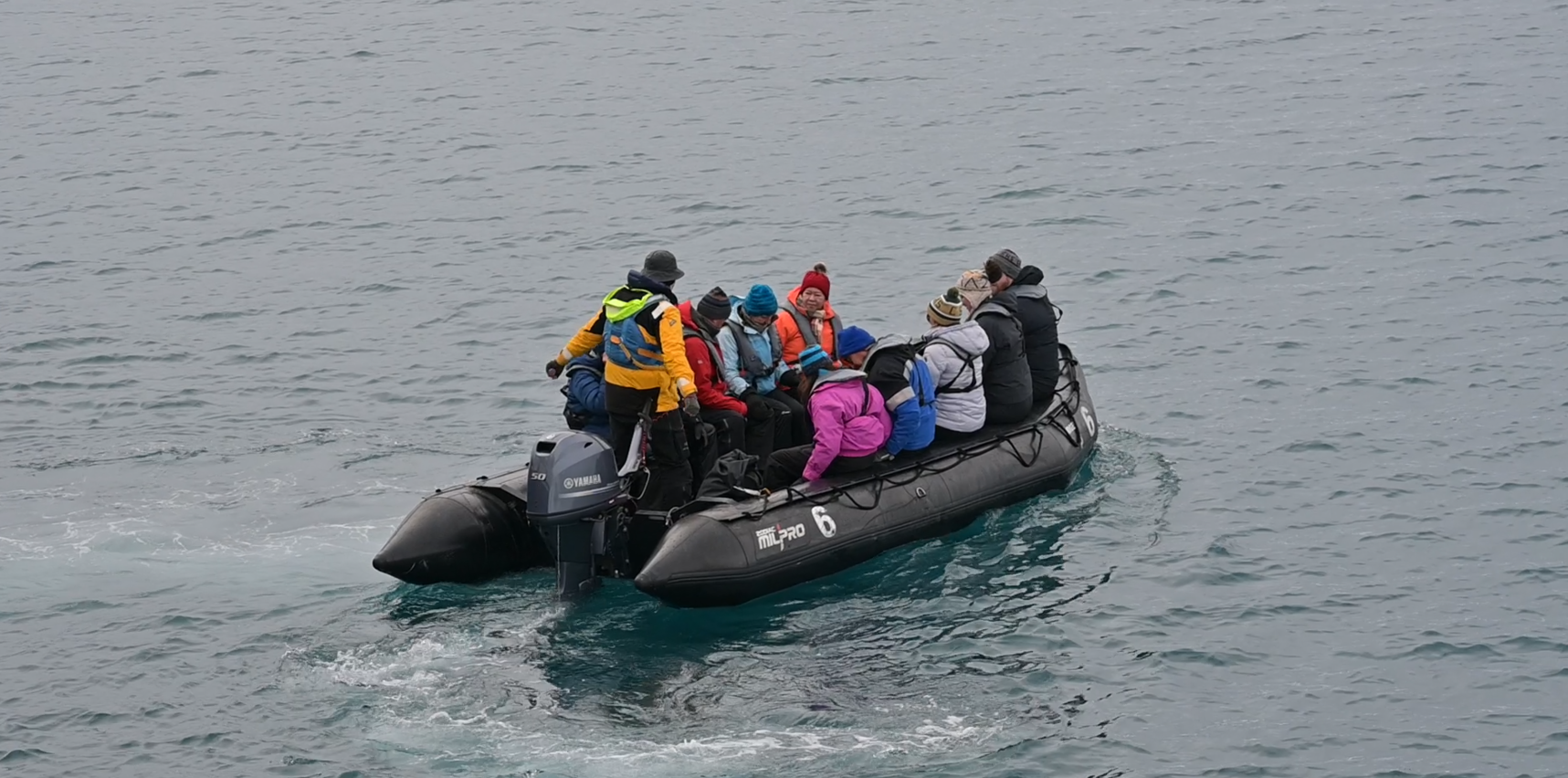
Zodiac boat taking passengers from ship to shore
Half Moon Bay:
Our inaugural landing at Half Moon Bay in the South Shetland Islands was surreal. A shipwreck partially submerged in the bay set a poignant scene. Chinstrap penguins populated the area, adhering to their ‘Penguin Highways’—well-trodden paths between nests and the sea. Observing these creatures waddle by, occasionally pausing to inspect us, was enchanting.
The crew had clearly marked our permitted areas with flags. As we explored the island, we encountered numerous seals and eventually discovered a colony of chinstrap penguins. At each nest, one parent cared for one or two chicks while the other foraged for food. We observed mother penguins regurgitating food into the open mouths of their chicks. After spending about three hours on the island, we returned to the ship.
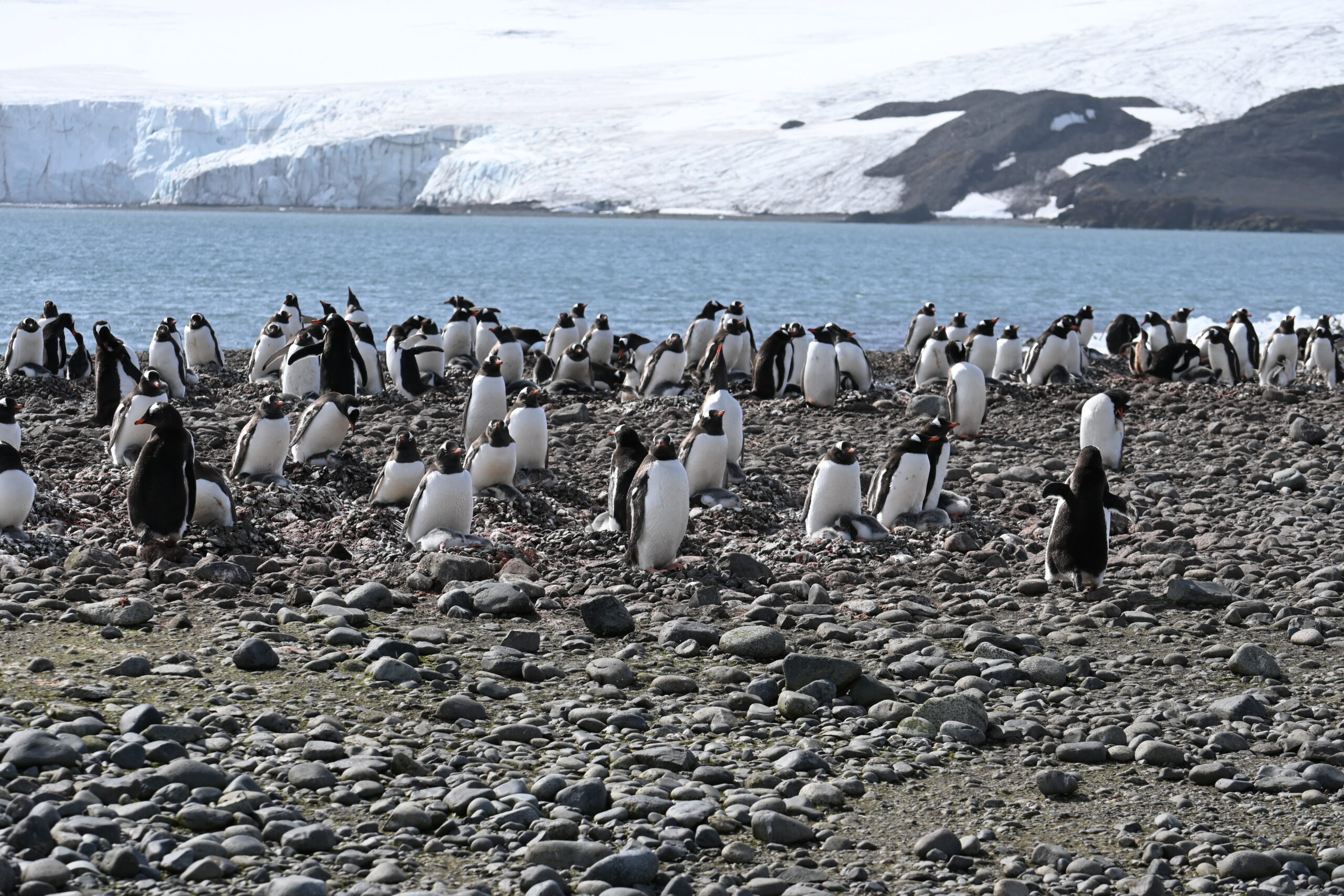
Chinstrap penguin colony on Half Moon Island, Antarctica
Yankee Harbor:
Our next destination was Yankee Harbor, where we followed a similar routine. This time, we observed Gentoo penguins, identifiable by their bright orange beaks. We spent another three hours on the island before heading back.
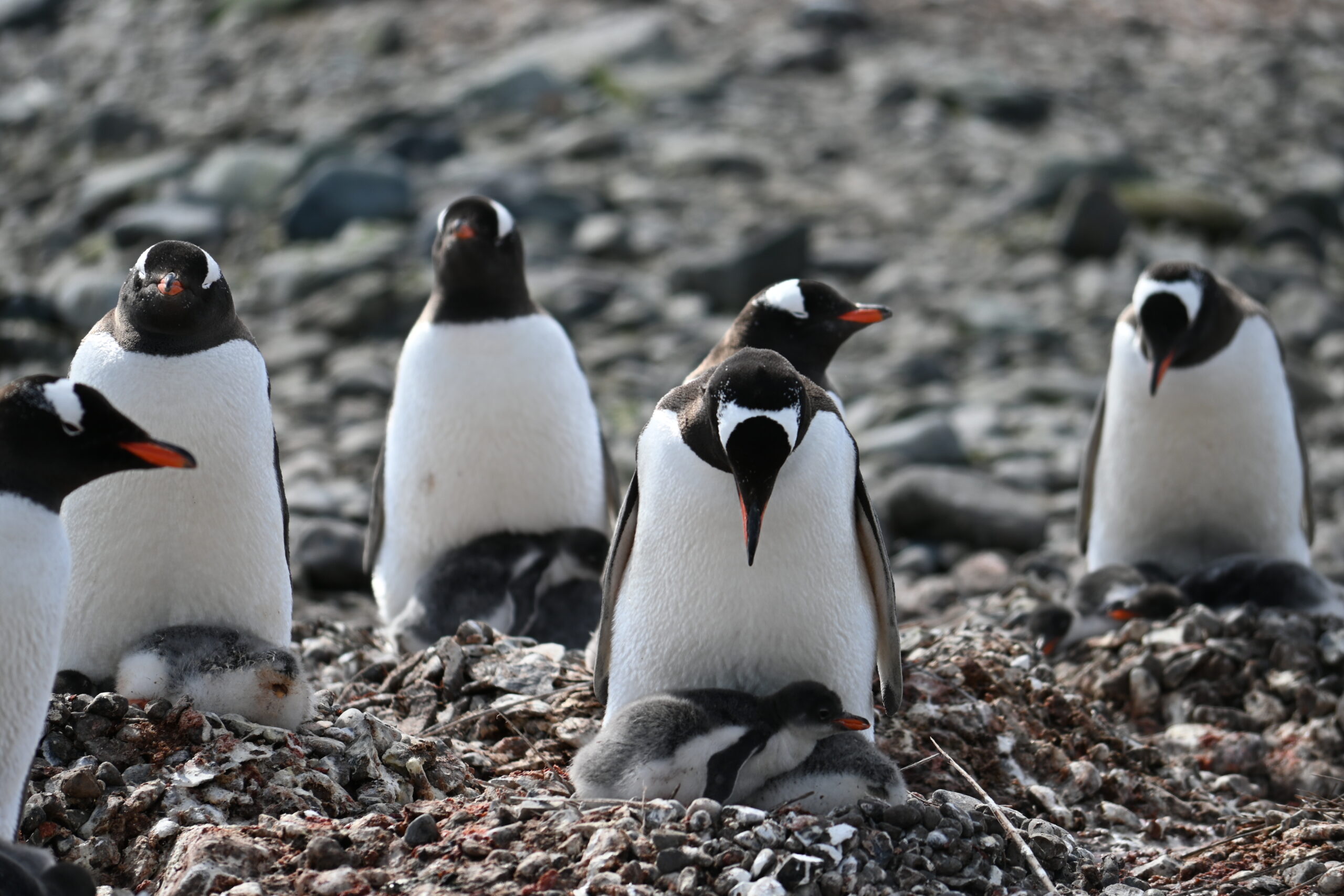
Gentoo penguins in Yankee Harbor, Antarctica
Antarctic Peninsula & Polar Plunge:
The following morning, we arrived at the Antarctic Peninsula and made a couple of landings. In the afternoon, we were offered the opportunity to participate in a “polar plunge,” involving a jump into the freezing waters of the Southern Ocean. My wife and I declined but watched as about a dozen fellow passengers took the plunge.
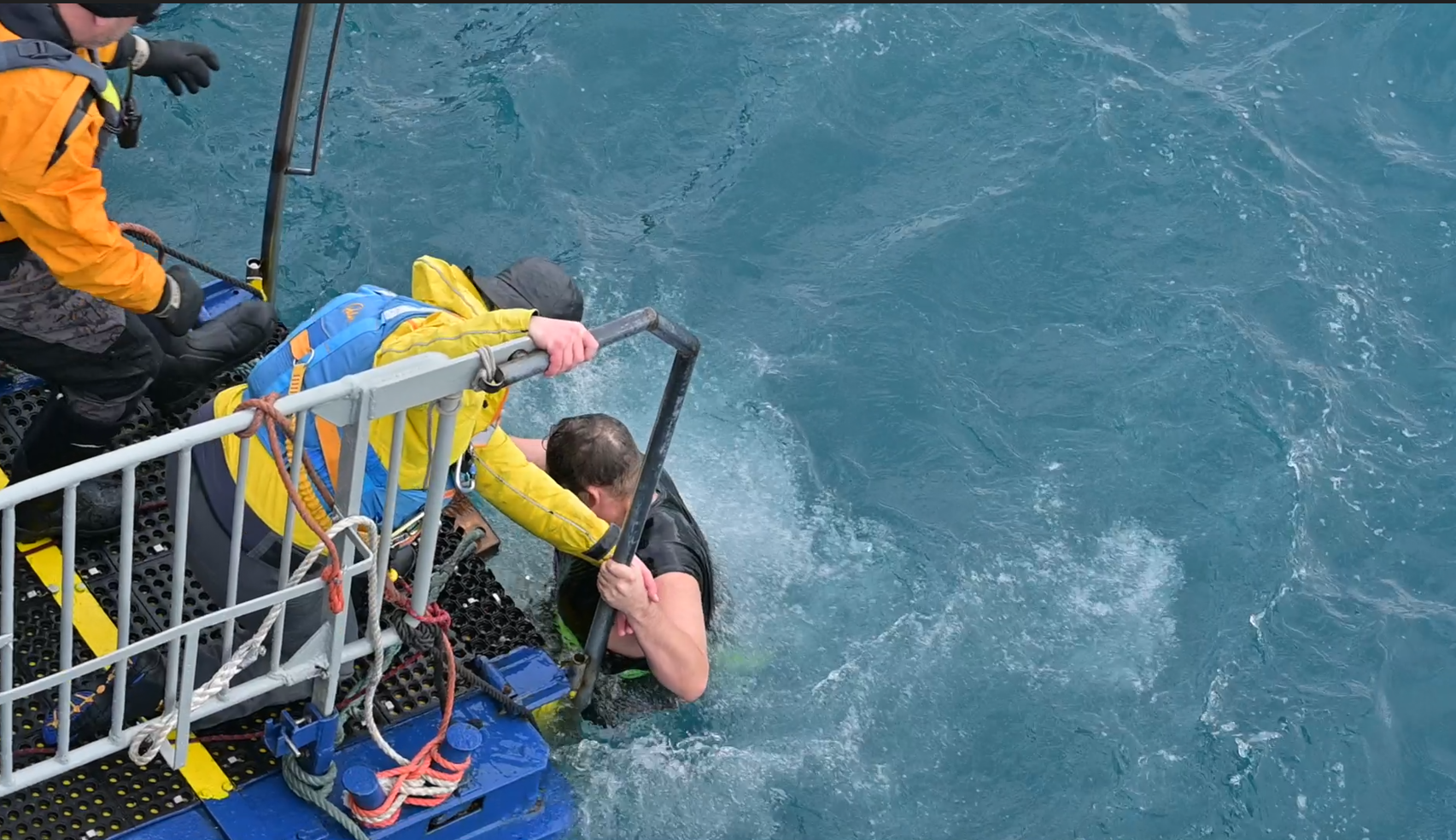
Our fellow passenger taking a Polar Plunge!
Flying out of Antarctica:
That night, the ship set course for King George Island. Early the next morning, we took a zodiac boat to the island, then a bus to the Chilean Frei Antarctic Station, where we waited at a small makeshift airstrip. Our plane—a large jet painted black and white like a penguin—landed, and we boarded. The aircraft seemed out of place in this desolate corner of the world.
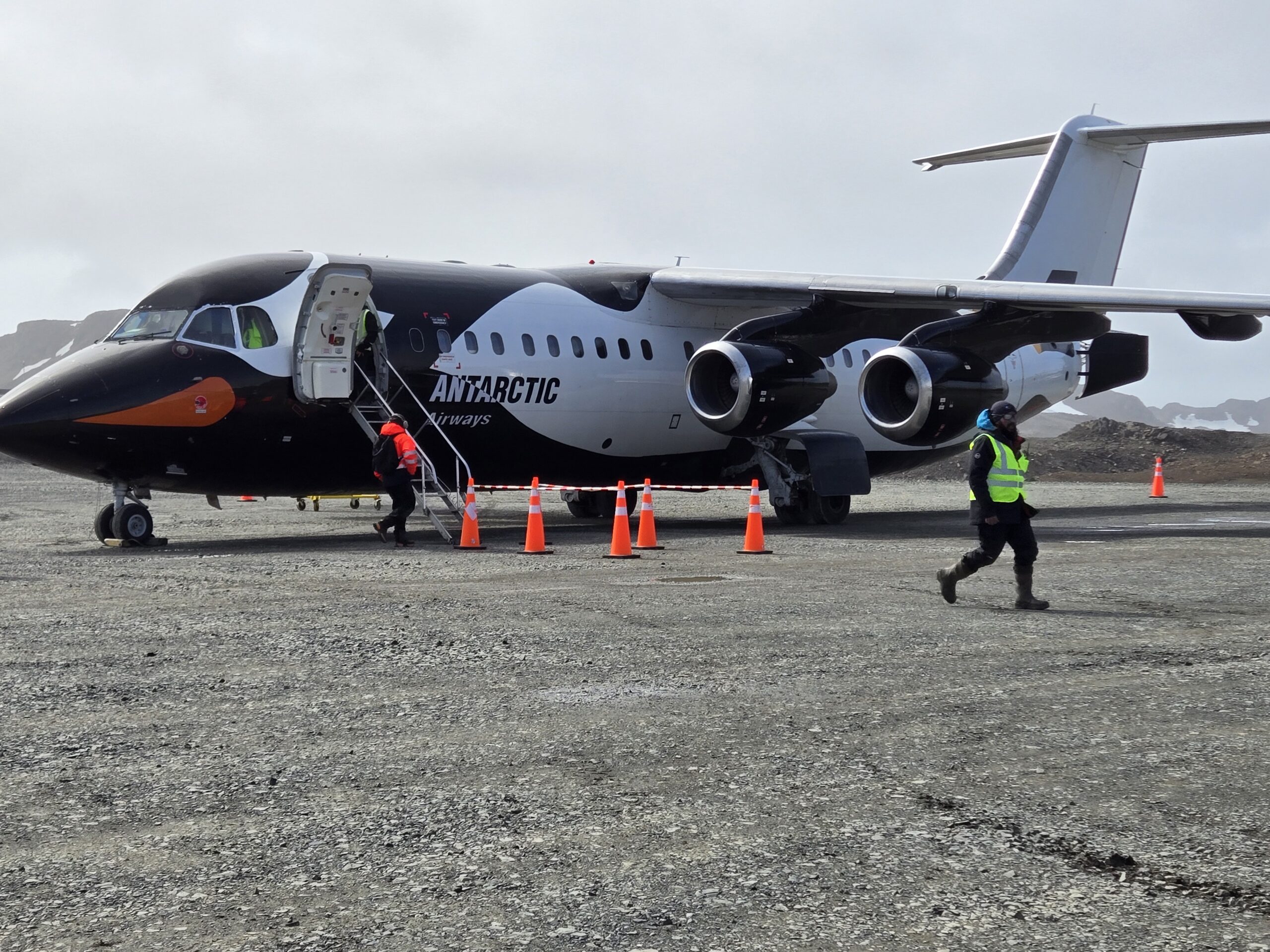
The plane waiting to fly us out of Antarctica
I had opted for this combination of cruise and flying to avoid crossing the Drake Passage twice, and it also saved us time and money.
As the plane took off, I looked out the window at the almost alien landscape below: icebergs floating among islands of ice stretching to the horizon. As we ascended toward Chile, we entered clouds, and the view of Antarctica disappeared.
If you plan to go:
The company we went through: Antarctica21, pioneered the Air-Cruise Expeditions in Antarctica and have been doing it for over 20 years. Check them out at www.Antarctica21.com

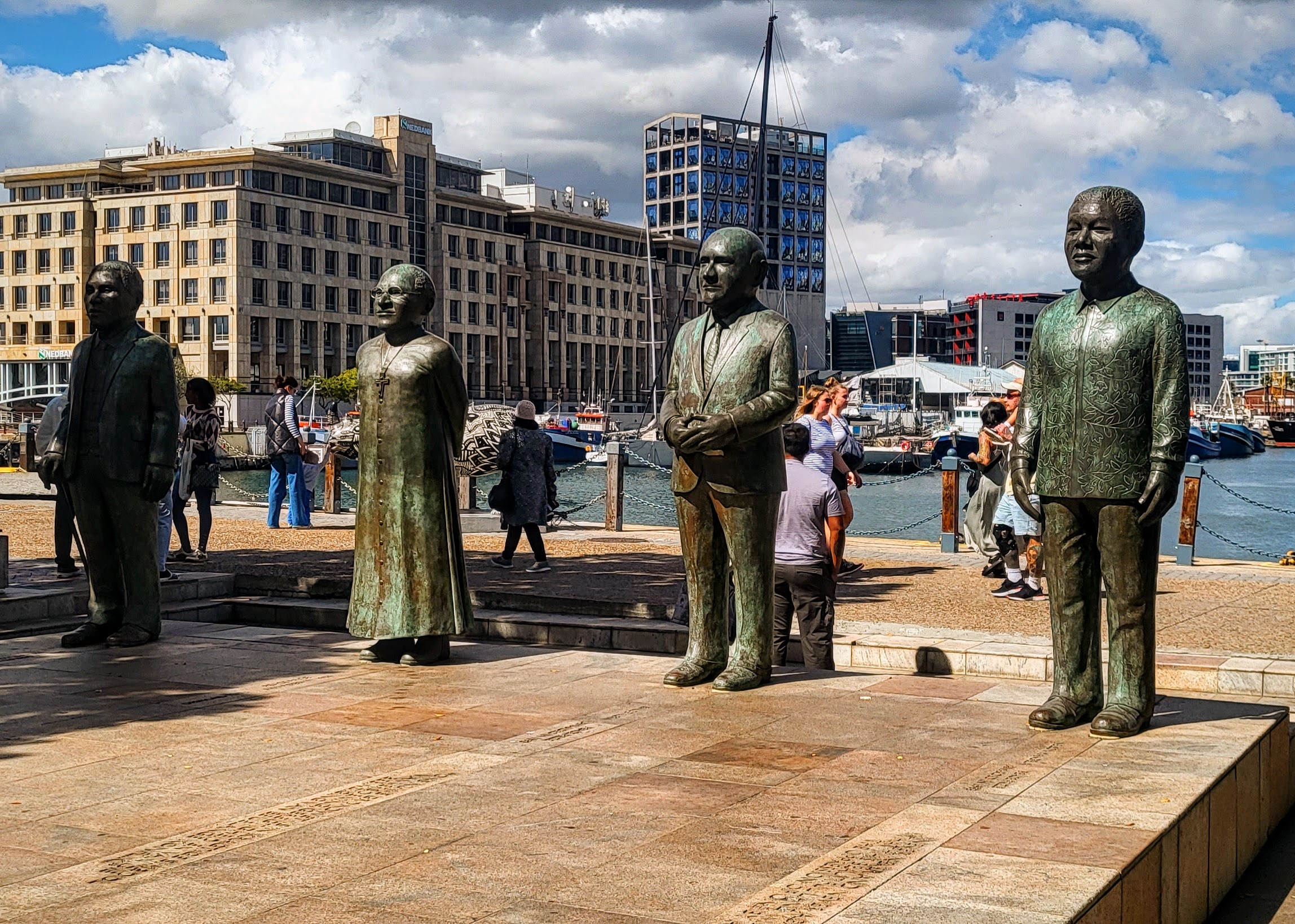

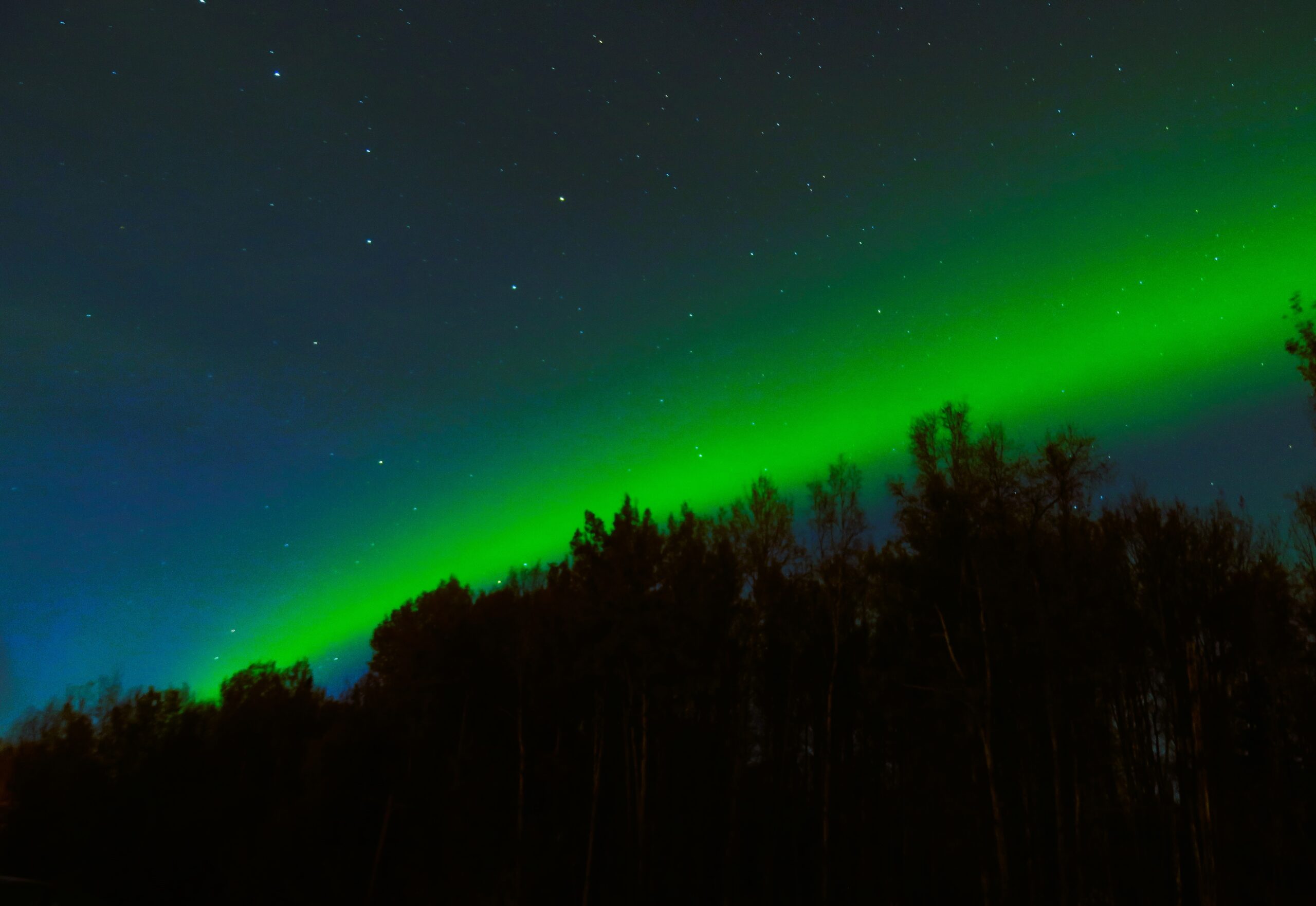
2 responses to “Journey to the Seventh Continent”
Loved the story.
Thank you.
SS